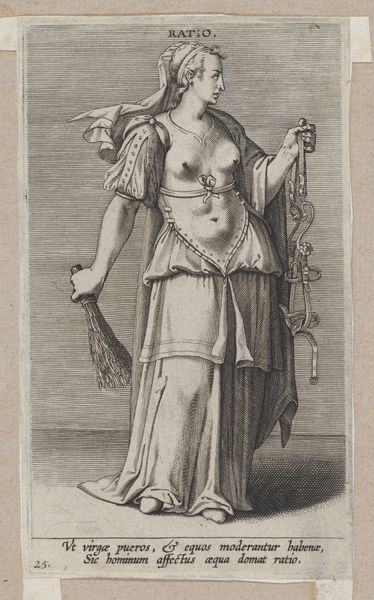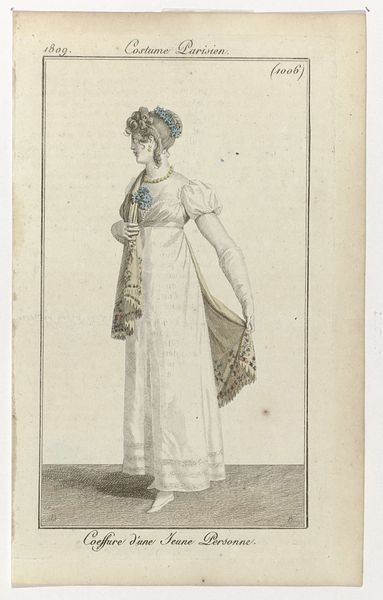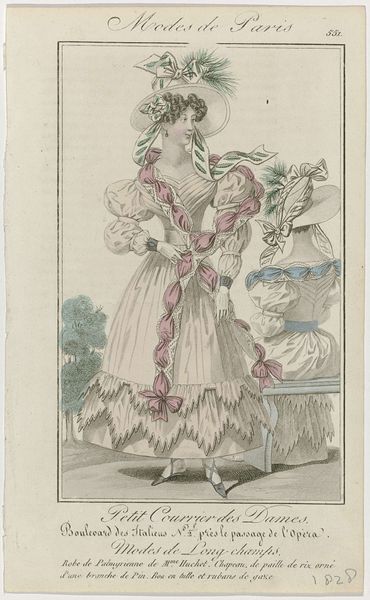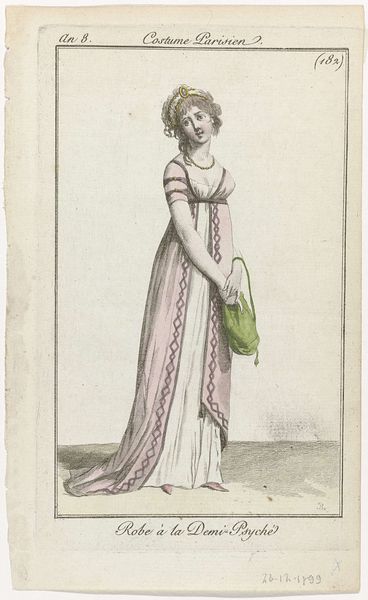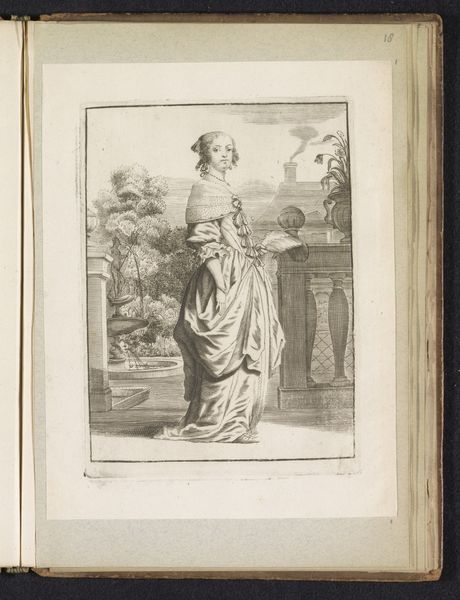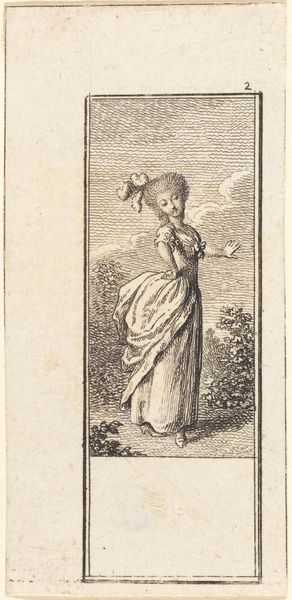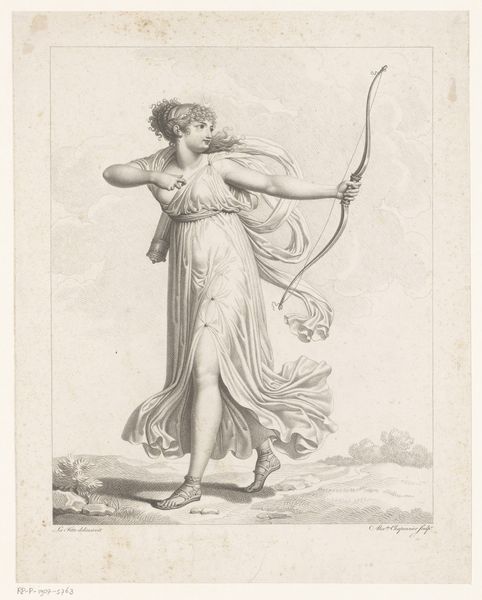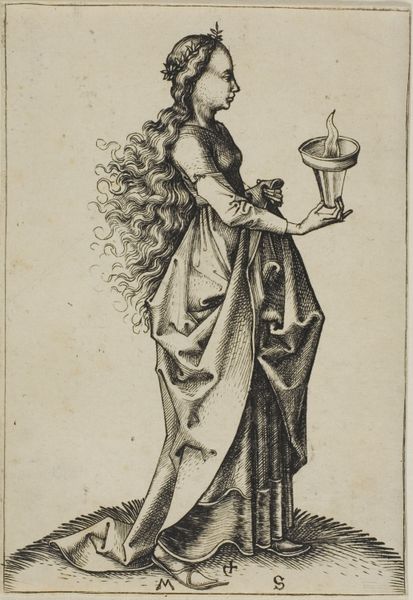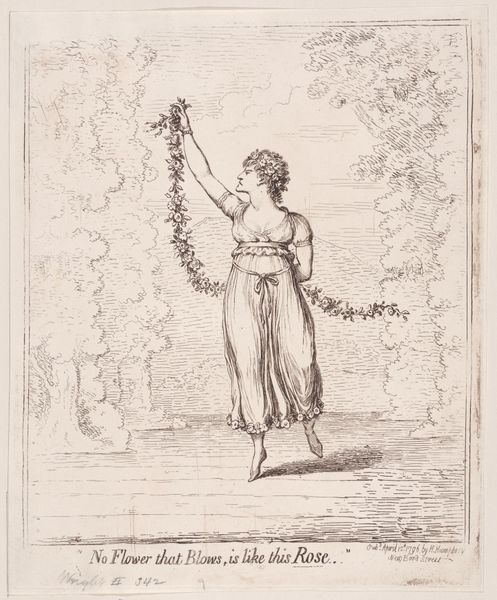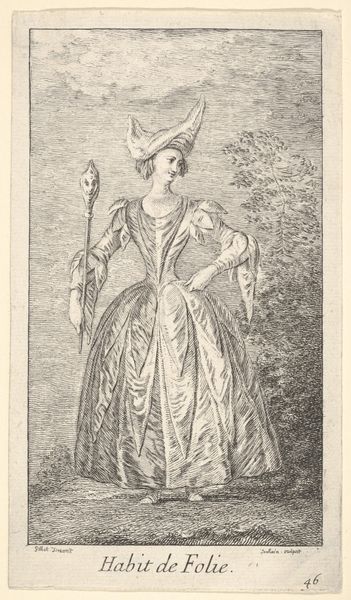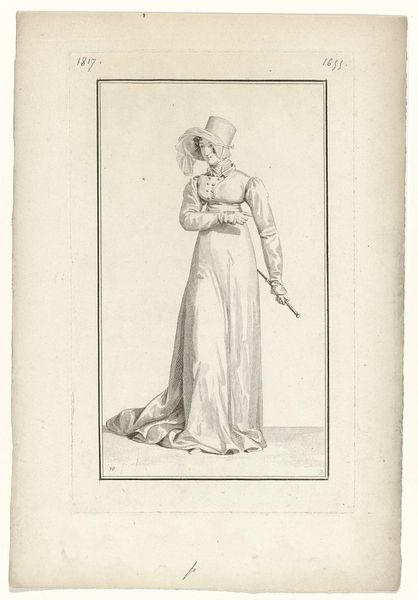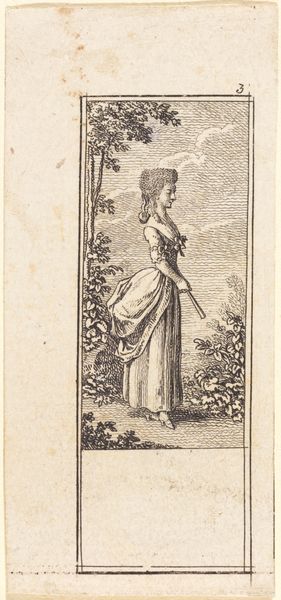
Dimensions: 161 mm (height) x 102 mm (width) (plademaal)
Curator: Georg Fahrenholtz produced this engraving, “Titelblad: 'Justitia'”, in 1783. It is currently housed here at the Statens Museum for Kunst. Editor: There’s a cool stillness to this piece. Despite all the symbolic objects crammed around the figure, the overall composition is remarkably balanced, even serene. Curator: Note the classical contrapposto stance of the central female figure, elegantly draped, juxtaposed against the more rigid verticality of the column. Semiotically, her position reflects the concept of measured, reasoned judgment. The laurel wreath she is holding could also signify justice being granted or victory. Editor: I see a direct connection to enlightenment ideals here, with justice depicted as this serene, almost passive figure, offering symbolic rewards but also leaning on that strong pillar. The sword and bound fasces also seem very... masculine, maybe implying justice needs tools beyond itself to maintain order? The question of justice back then wasn't as straightforward as presented here. Whose justice was this? Curator: The visual contrast is precisely what’s so intriguing. The sharp, detailed lines of the engraving enhance the symbolic clarity; observe how the drapery cascades create this movement— the static allegory seems more like an actively rendered ideal. Note how her dress also gives her bare feet in a casual, yet sophisticated form. The print manages to suggest complexity through controlled formal means. Editor: That complexity is muted for me. Allegories always require unpacking of their intended audience, their cultural moment. The fact that she's almost lounging implies to me she belongs to a wealthy class who would believe themselves to be innocent no matter their deeds. What sort of justice is truly depicted? Is it simply self-affirmation? It is vital to also bring nuance into this controlled artwork with controlled intent. Curator: Undoubtedly, but consider that the formal elements actively engage in this complexity. The interplay of positive and negative space directs our eyes throughout the piece, preventing a simple, unilateral interpretation. And from a structural viewpoint, notice how Fahrenholtz used shading to give a texture on a mostly barren piece. The technique has value. Editor: Agreed. Understanding technique, and deconstructing visual grammar, offers vital foundations to understanding context. To believe we understand justice would be the least just action we could take. Curator: Yes, exactly. Fahrenholtz delivers more than merely another baroque composition for the period— it invites deeper questions by way of the artist’s subtle manipulations of the medium.
Comments
No comments
Be the first to comment and join the conversation on the ultimate creative platform.

